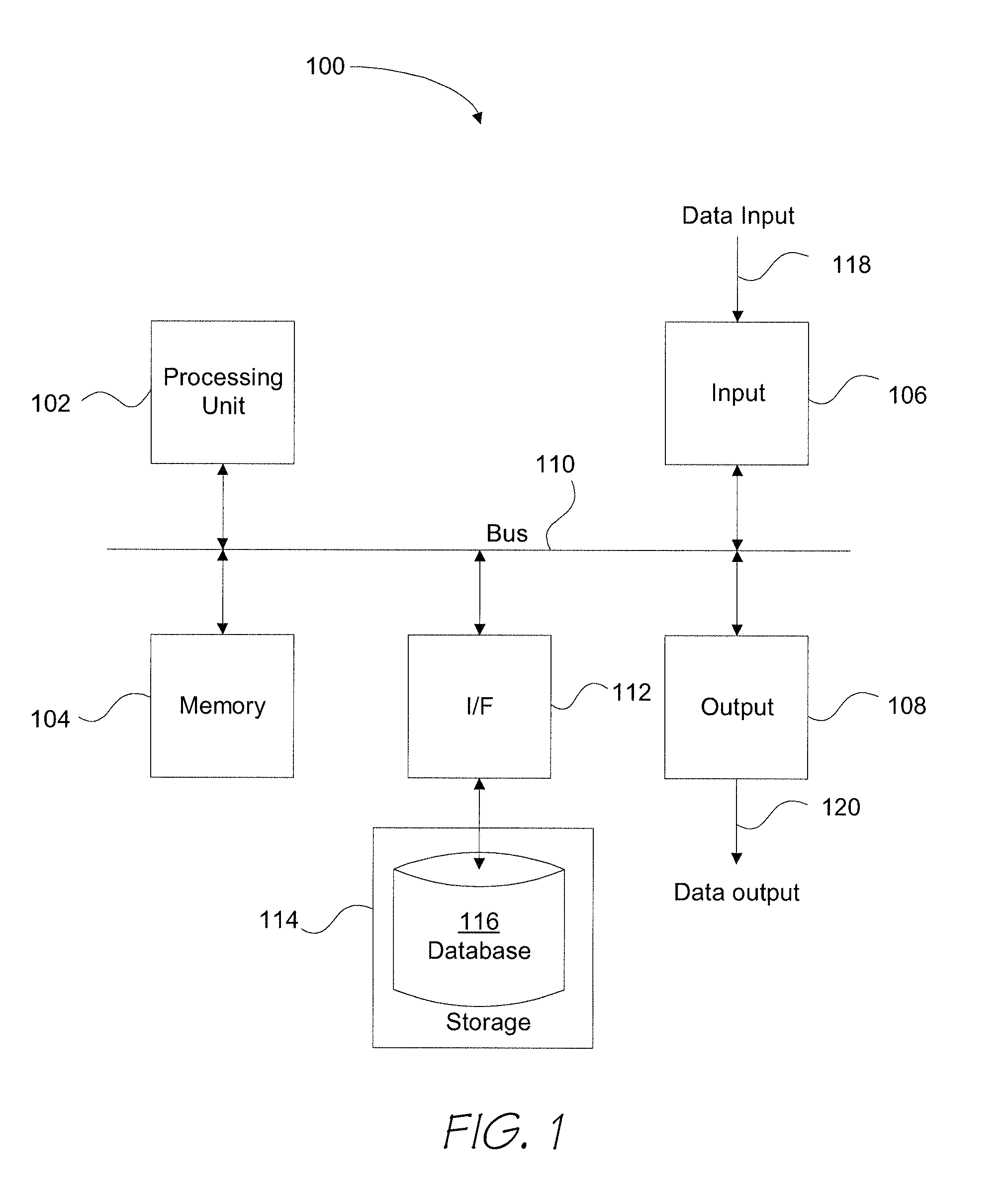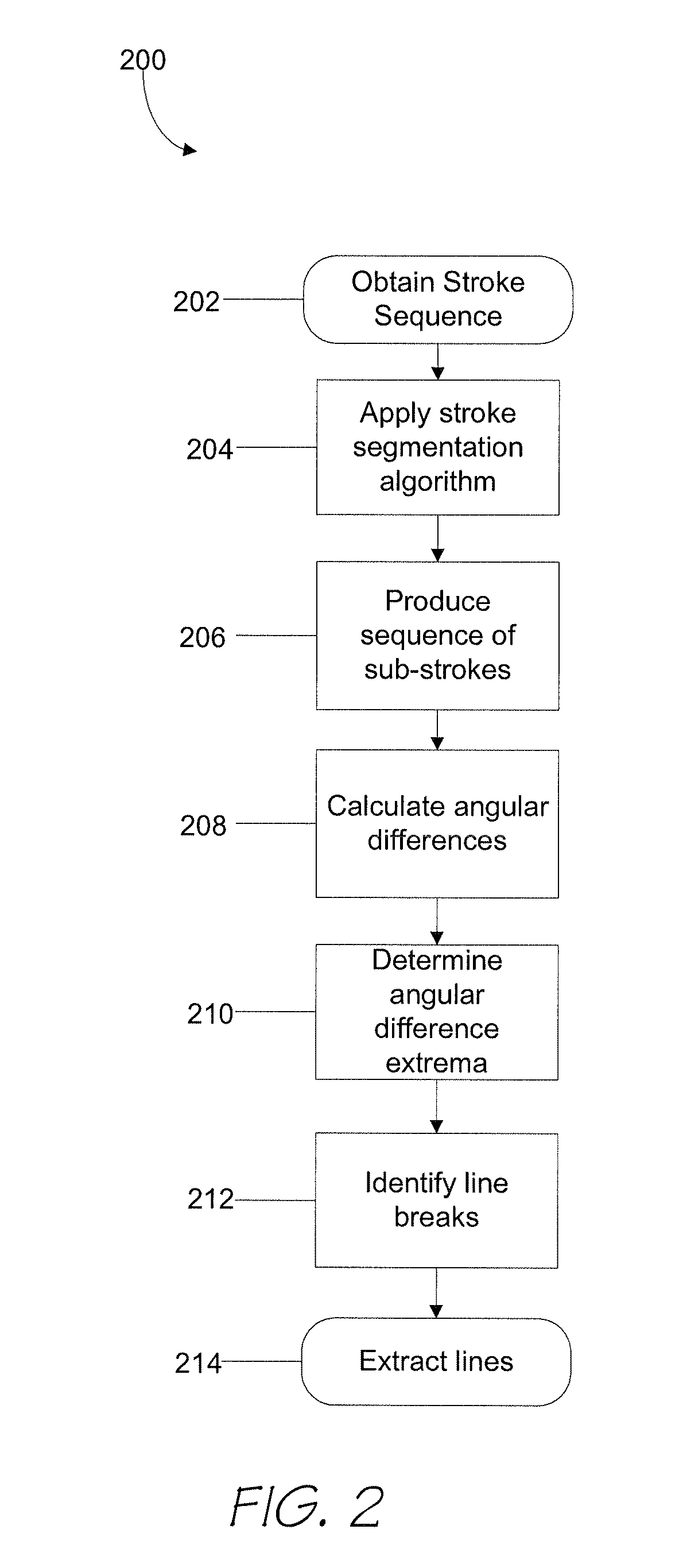Method and system for line extraction in digital ink
a digital ink and line extraction technology, applied in digital ink recognition, instruments, computing, etc., can solve the problems of inability to work well, low handwriting recognition accuracy, and difficult handwritten text search, and achieve the effect of not slowing down further ink processing and being computationally inexpensiv
- Summary
- Abstract
- Description
- Claims
- Application Information
AI Technical Summary
Benefits of technology
Problems solved by technology
Method used
Image
Examples
embodiment
Preferred Embodiment
[0087]A particular embodiment of the present invention can be realised using a processing system, an example of which is shown in FIG. 1. In particular, the processing system 100 generally includes at least a processor or processing unit 102, a memory 104, an input device 106 and an output device 108, coupled together via a bus or collection of buses 110. An interface 112 can also be provided for coupling the processing system 100 to a storage device 114 which houses a database 116. The memory 104 can be any form of memory device, for example, volatile or non-volatile memory, solid state storage devices, magnetic devices, etc. The input device 106 receives data input 118 and can include, for example, digital notepad etc. The output device 108 produces data output 120 and can include, for example, a display device, monitor, printer, network card, etc. The storage device 114 can be any form of storage means, for example, volatile or non-volatile memory, solid state...
PUM
 Login to View More
Login to View More Abstract
Description
Claims
Application Information
 Login to View More
Login to View More - R&D
- Intellectual Property
- Life Sciences
- Materials
- Tech Scout
- Unparalleled Data Quality
- Higher Quality Content
- 60% Fewer Hallucinations
Browse by: Latest US Patents, China's latest patents, Technical Efficacy Thesaurus, Application Domain, Technology Topic, Popular Technical Reports.
© 2025 PatSnap. All rights reserved.Legal|Privacy policy|Modern Slavery Act Transparency Statement|Sitemap|About US| Contact US: help@patsnap.com



